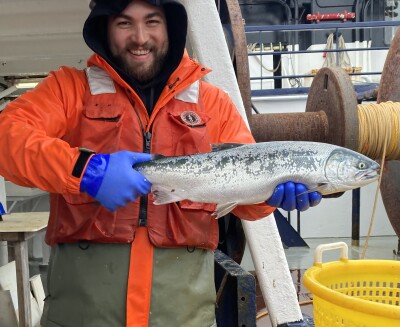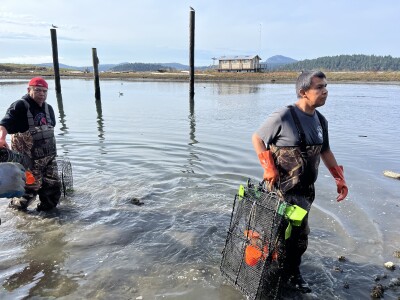Tribes, fisheries, and individual fishing companies shared their concerns and ideas about the declining salmon population in an April 6 meeting in Anchorage, Alaska. The North Pacific Fishery Management Council (NPFMC) has been gathering feedback to help shape a possible federally-backed bycatch rule for the future.
The National Marine Fisheries Service (NMFS) reviewed the preliminary Draft Environmental Impact Statement (Draft EIS) for the proposed management measures to reduce chum salmon Prohibited Species Catch in the Bering Sea pollock fishery. A letter issued by the United States Department of Commerce to NPFMC states that NMFS advises the council to broaden the range of alternatives by including a lower overall chum salmon limit to provide additional contrast and ensure compliance with the National Environmental Policy Act.
The Department of Commerce stated that the EIS process evaluates a wide range of alternatives, disclosing the advantages and disadvantages to help decision-makers and the public weigh the costs against the potential benefits.
According to Alaska News Source, many tribal testifiers said that the declining salmon populations impact their culture, spiritual health, and fishing ability. Those in the commercial fishing and fishery industries also testified, addressing their concerns and impacts about the possibility of bycatch restrictions on their businesses and the proposed solutions.
Stephanie Madsen, executive director of the At-sea Processors Association, said, “We employ a lot of people, and if there would be ramifications not only to our employees or support services, the people that get our product as well as you’ve probably heard a lot about the community quota program which is dependent on pollock revenues. You can’t see the sonar on the fish, whether it’s salmon or pollock. You can’t tell the difference. We also know that chum salmon like to eat zero-aged pollock, so it’s very natural that they will swim together.”
Tribal leaders such as Thaddeus Tikiun Jr., chairman of the Association of Village Council Presidents, testified, “My concern is that the number of salmon returning at some points are going to be dropping down so low that you know the spawn and the fish spawning, and we’re going to be out of fish pretty quick. It is going to take several years once the salmon do return, and it’s going to take several years before the numbers are back up.”







